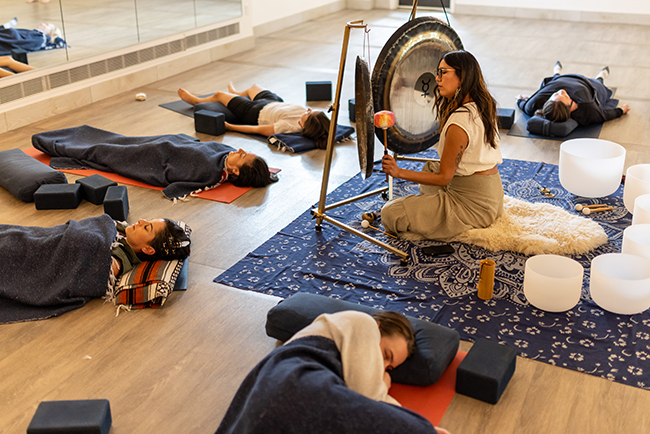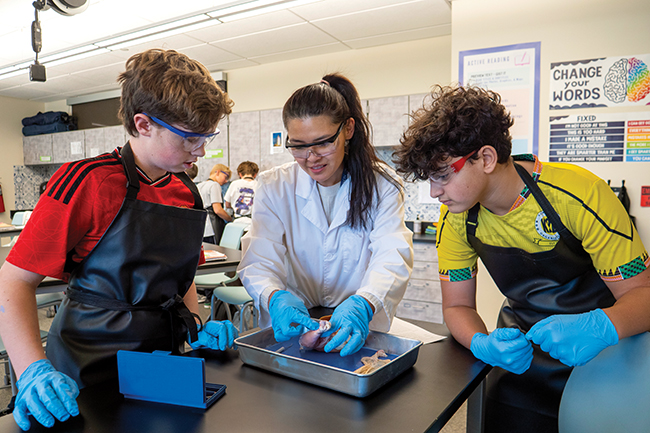Keeping Spring Allergies at Bay
02 Dec 2013
Keeping Spring Allergies at Bay
Does the thought of spring allergies make you dread snowmelt? Do you feel like you need to be trapped inside for weeks at a time rather than out enjoying the season? If so, you’re not alone. According to the Centers for Disease Control and Prevention, 16.9 million Americans suffer from seasonal allergies. This spring, rather than stock up on medicines and tissues, prevent allergens from attacking in the first place.Springtime allergies, often called hay fever, are usually caused by pollen from trees, grasses and weeds. Hay fever is most common in the spring and early summer, when flowering plants release pollen to reproduce. Pollen and mold spores are windborne, traveling great distances on the breeze to pollinate or fertilize another plant. Plants without showy flowers, like trees, cause hay fever more often than those with showy flowers, which are usually pollinated by insects.
Breathing in particles of pollen can trigger a sequence of events in the body. When an allergen finds its way into your respiratory tract, it can cause the immune system to overreact and create antibodies to attack the foreign material. That immune response initiates sneezing, watery eyes, stuffy nose and nasal itchiness. Such reactions are signs that your body is rejecting the particle and working to remove it.
Assess your ‘total load’
The typical medical treatment plan for allergies entails avoiding the allergen and using antihistamines, decongestants, nasal sprays, and antiswelling corticosteroid drugs that suppress the immune system. Staying indoors for a whole season and relying on drugs aren’t acceptable to many people, however. The good news is you can prevent mild to moderate seasonal allergies from settling into your body, but you need to start now.
According to Rachelle Price, N.D., a naturopathic physician in Boulder, preventing spring allergies is all about supporting the immune system. That step comes first, she says, because allergens put your immune system into overdrive, causing an inflammatory reaction.
“Some people experience long-term relief from allergies by supporting their immune system and dealing with their food allergies,” she reports. Vitamins, supplements, probiotics and dietary changes are the primary tools for healing the immune system and gut.
Price says many people have sensitivities to certain foods, such as gluten or dairy, without knowing it. Figuring out what foods you may be sensitive to and eliminating them from your diet can reduce the inflammation load on your body. Price expresses it in terms of total load. If you are routinely exposed to trigger foods or other allergens like mold, dust or pet dander, your body already may be facing a large load. Then, come spring, the pollen or ragweed overwhelms the body, resulting in an immune response and accompanying symptoms. Reducing the load by removing allergens and avoiding certain foods “frees up space“ in your total load and could keep allergies from taking hold.
“The key is not seeing allergies as one issue, but seeing the whole picture of the person,” Price advises. “Figure out what you’re allergic to, see what is causing inflammation in your body, and address it by supporting your immune system.”
Another important step in preventing spring allergies is managing stress, Price says. Stress weakens the immune system and leads to an imbalance of cortisol, resulting in inflammation. Learning to control stress through meditation or other stress-reducing activities can help control your cortisol levels, reduce inflammation and create homeostasis, or internal stability, in the body.
The ayurvedic approach
According to ayurvedic medicine, an ancient Indian medical tradition, allergy prevention starts in the winter when kapha energy is highest. Kapha is a heavy, sticky sort of energy that liquifies in the spring and comes running out of the body, says Alakananda Ma, an ayurvedic practitioner at Alandi Ayurveda Clinic in Boulder. The best way to deal with excess kapha is through panchakarma, or ayurvedic cleansing techniques, and taking herbs to enhance liver function. Once spring arrives, eat plenty of greens, and reduce intake of “heavy” foods like gluten and dairy.
Other solutions for preventing spring allergies include losing weight and quitting smoking. Anything that compromises the immune system and leads to inflammation should be avoided, Price says. She also suggests using a neti pot with a saline solution, or inhaling steam, to clear nasal passages. That helps remove the allergen from the sinuses and respiratory passages before it has time to set up shop and cause problems. For a steam inhalation, Price recommends including eucalyptus or thyme essential oils. To help with symptoms, you can take quercetin, a plant-based supplement that acts much like an antihistamine, in conjunction with vitamin C.
Perhaps this year you can toss out the tissues and enjoy all that springtime has to offer. ≤












